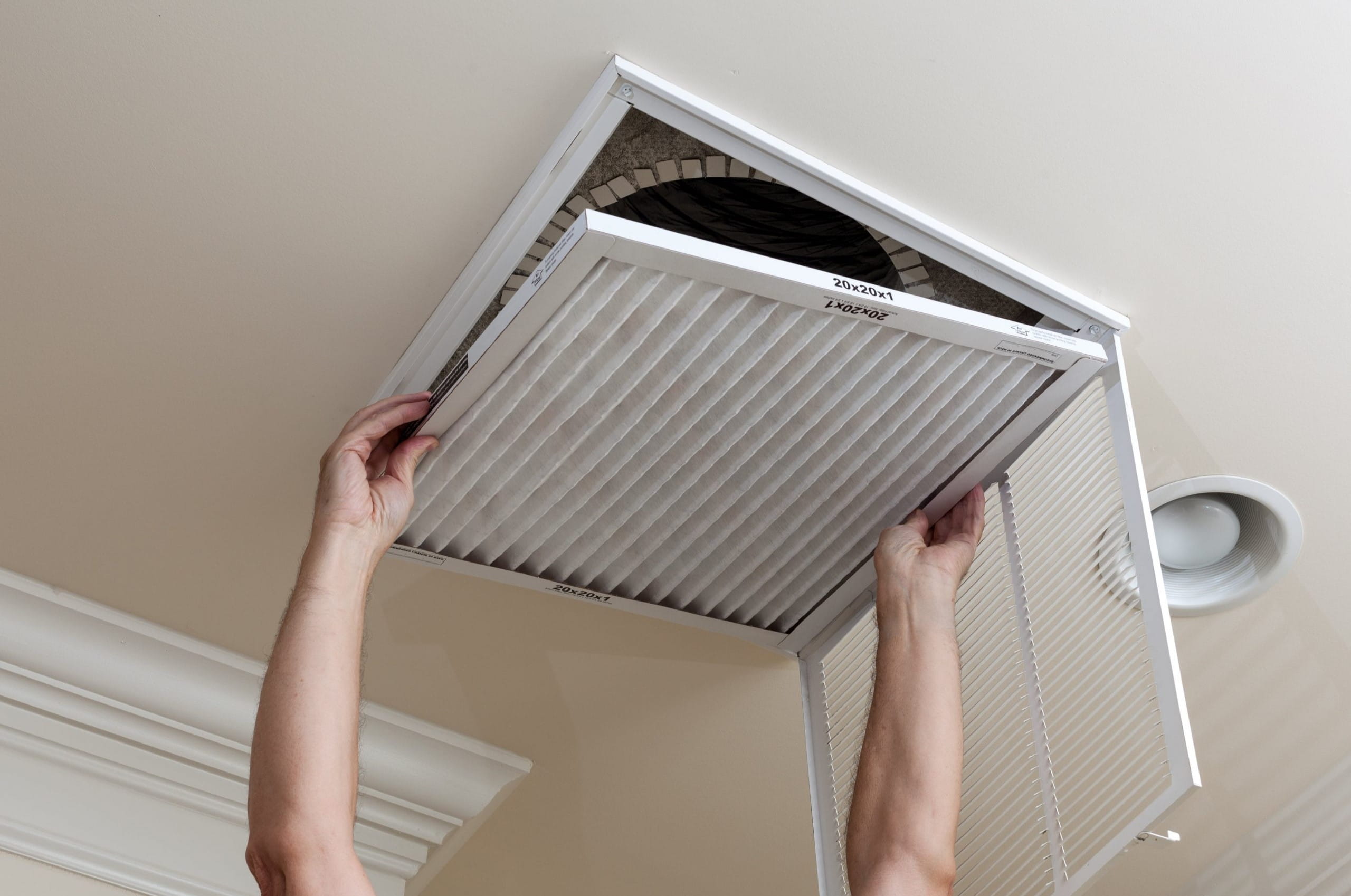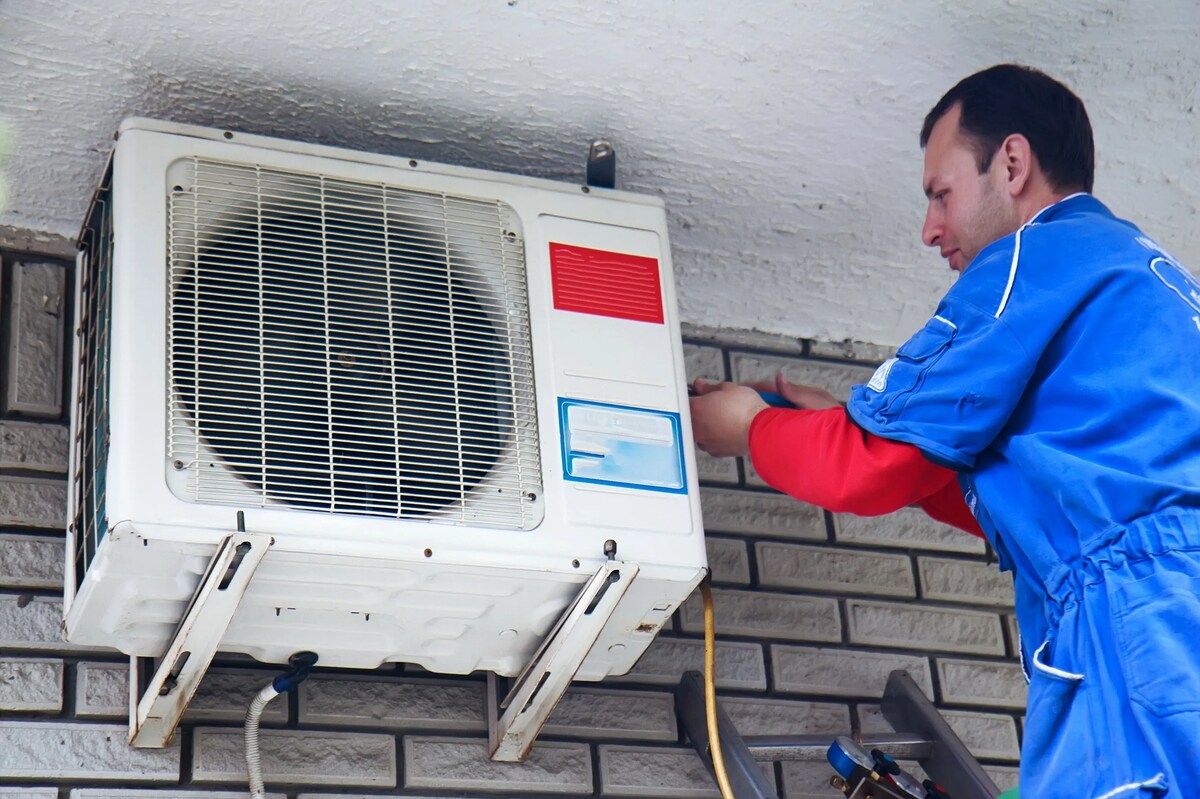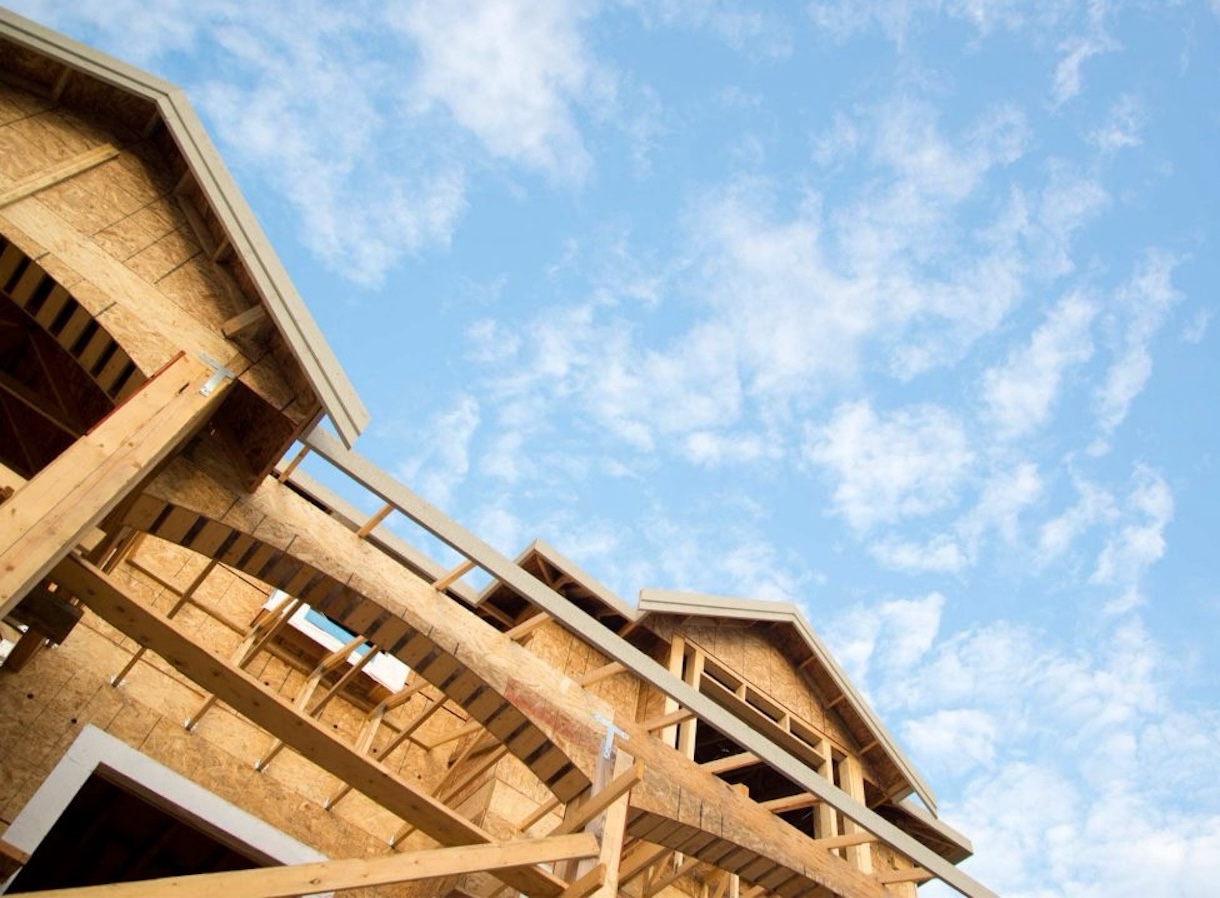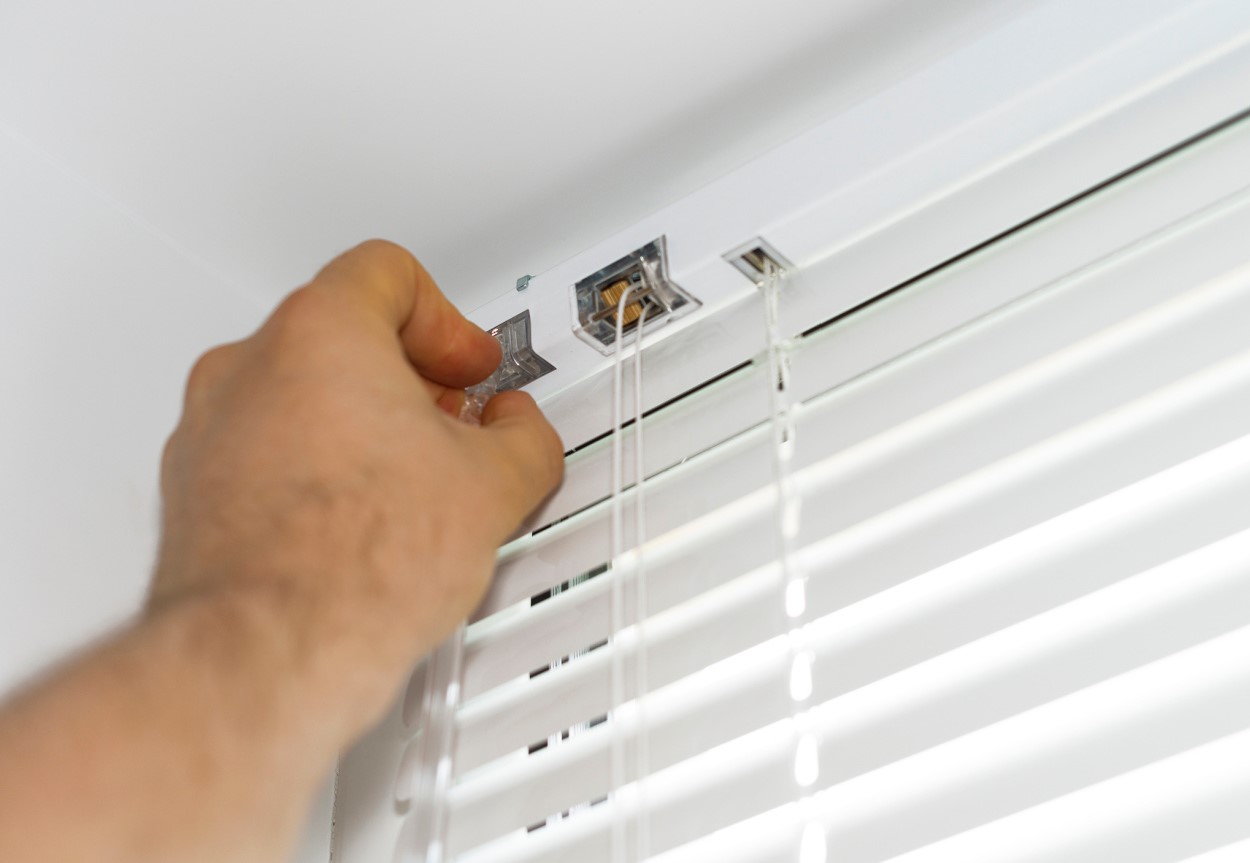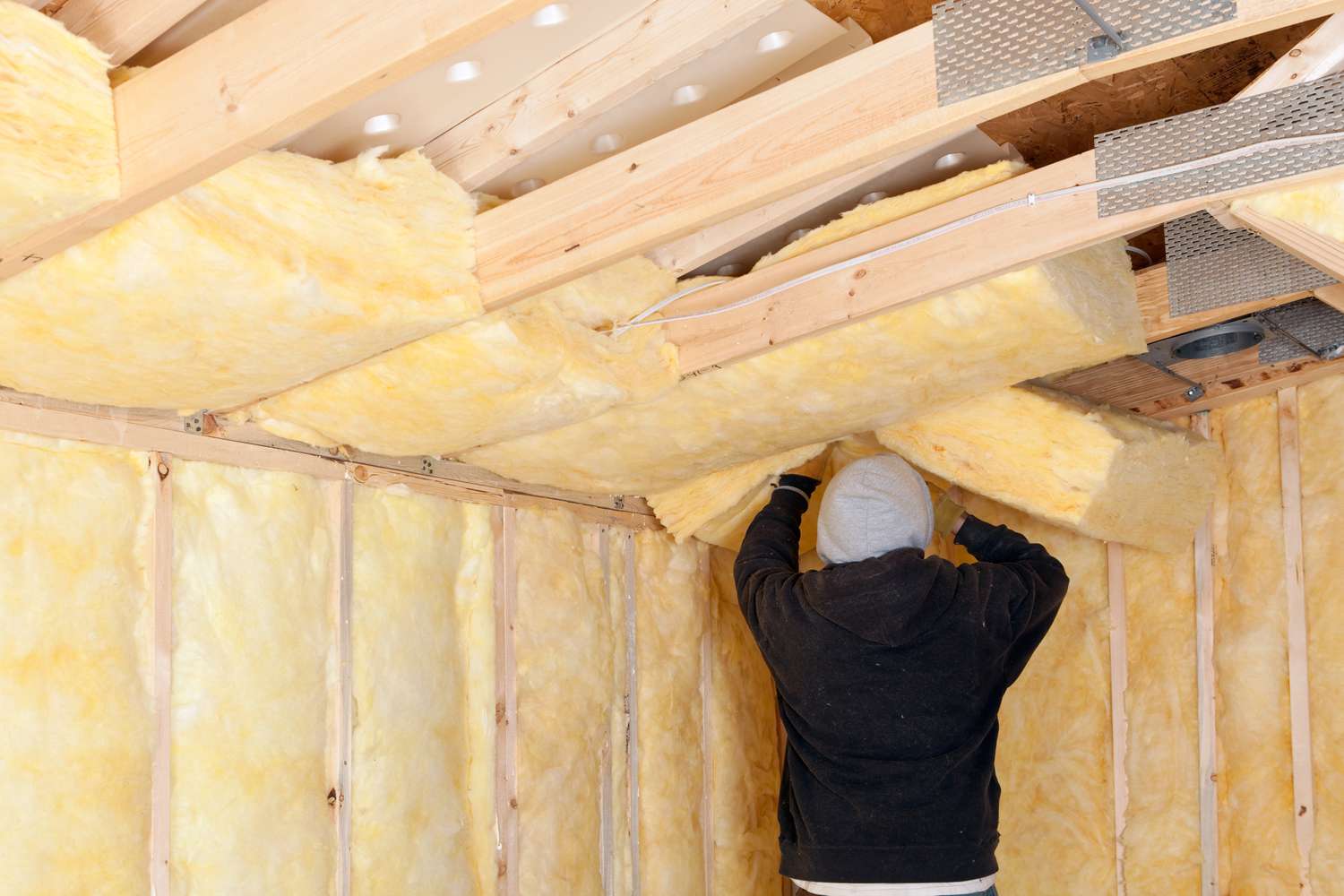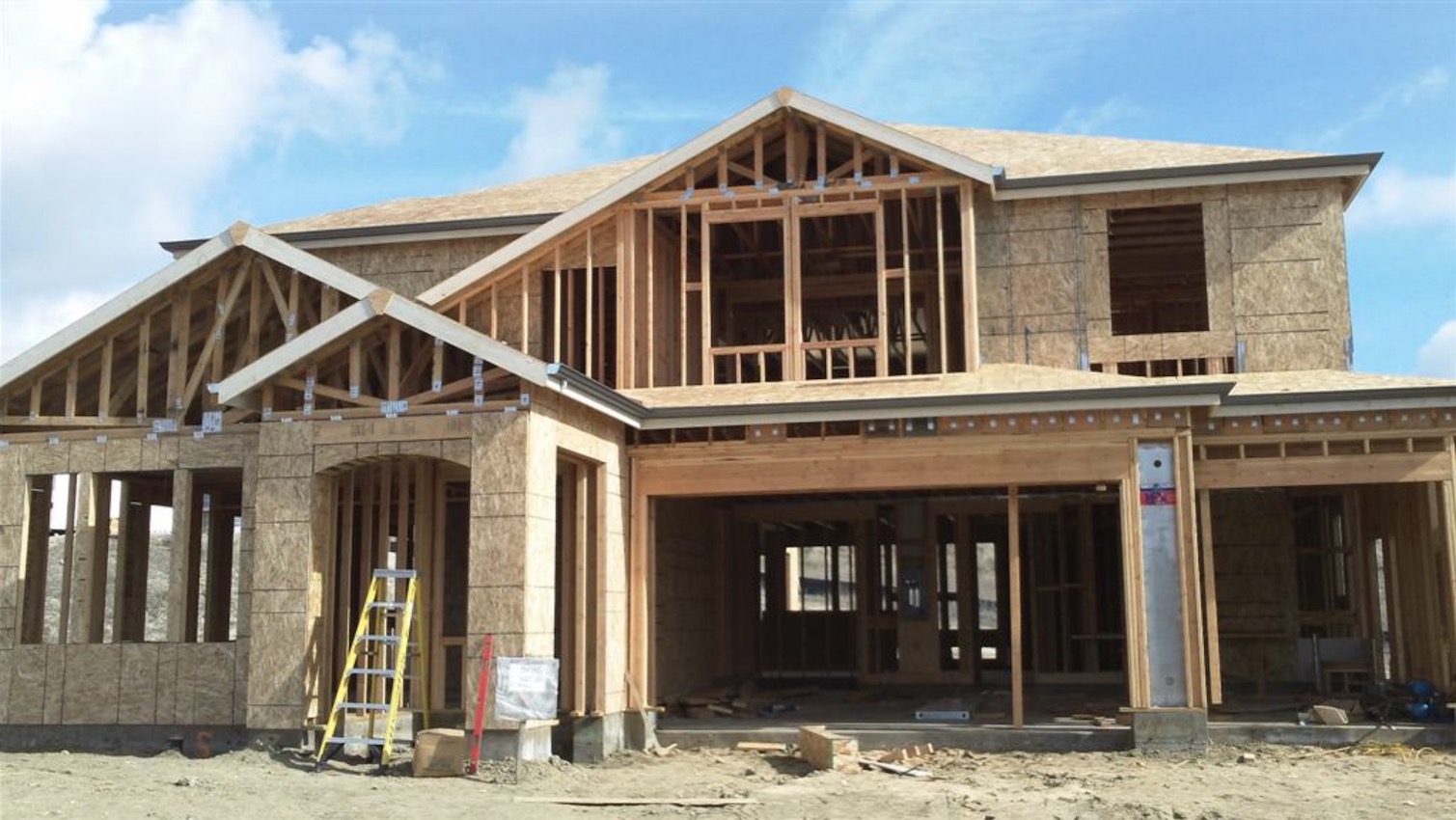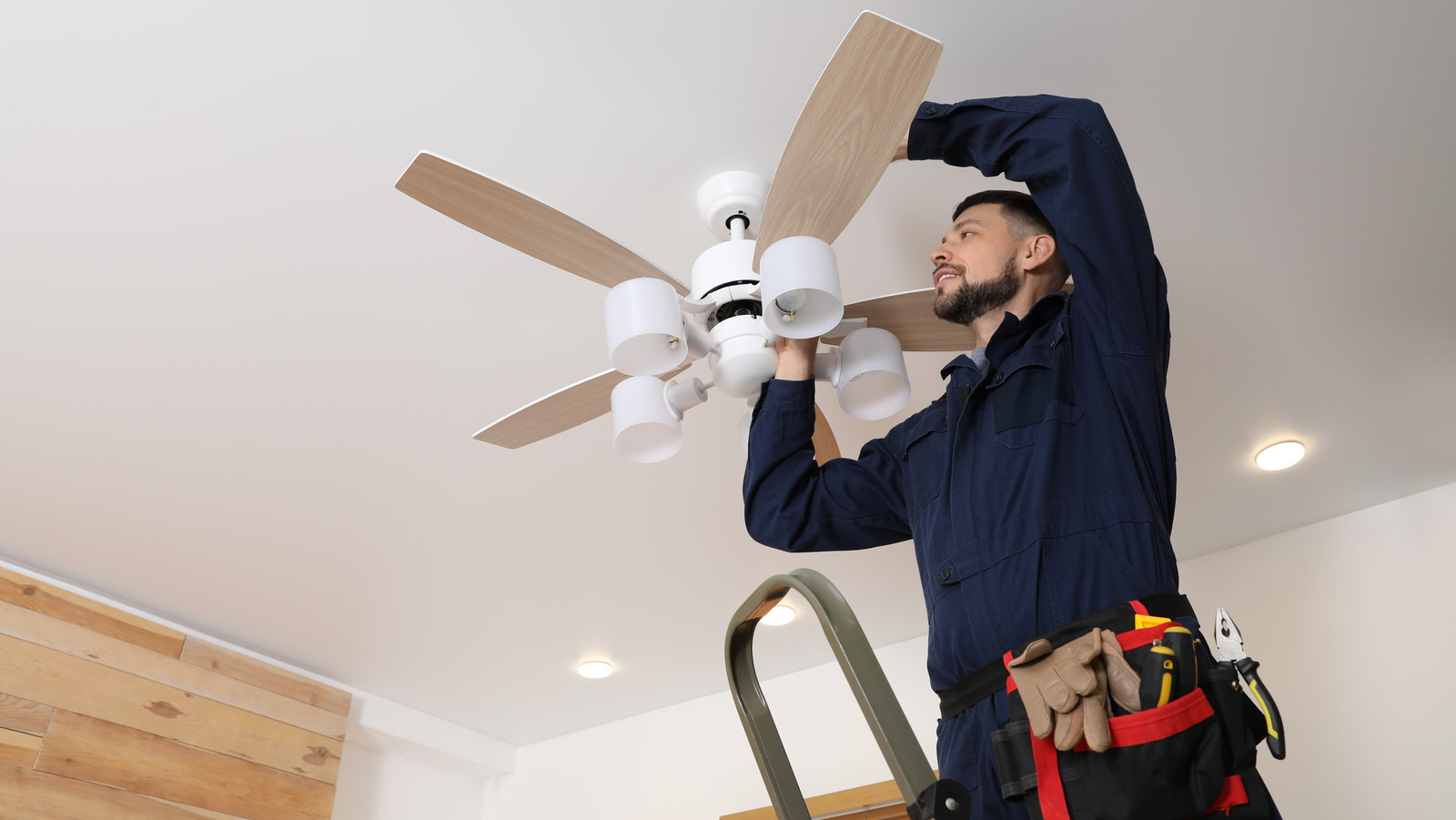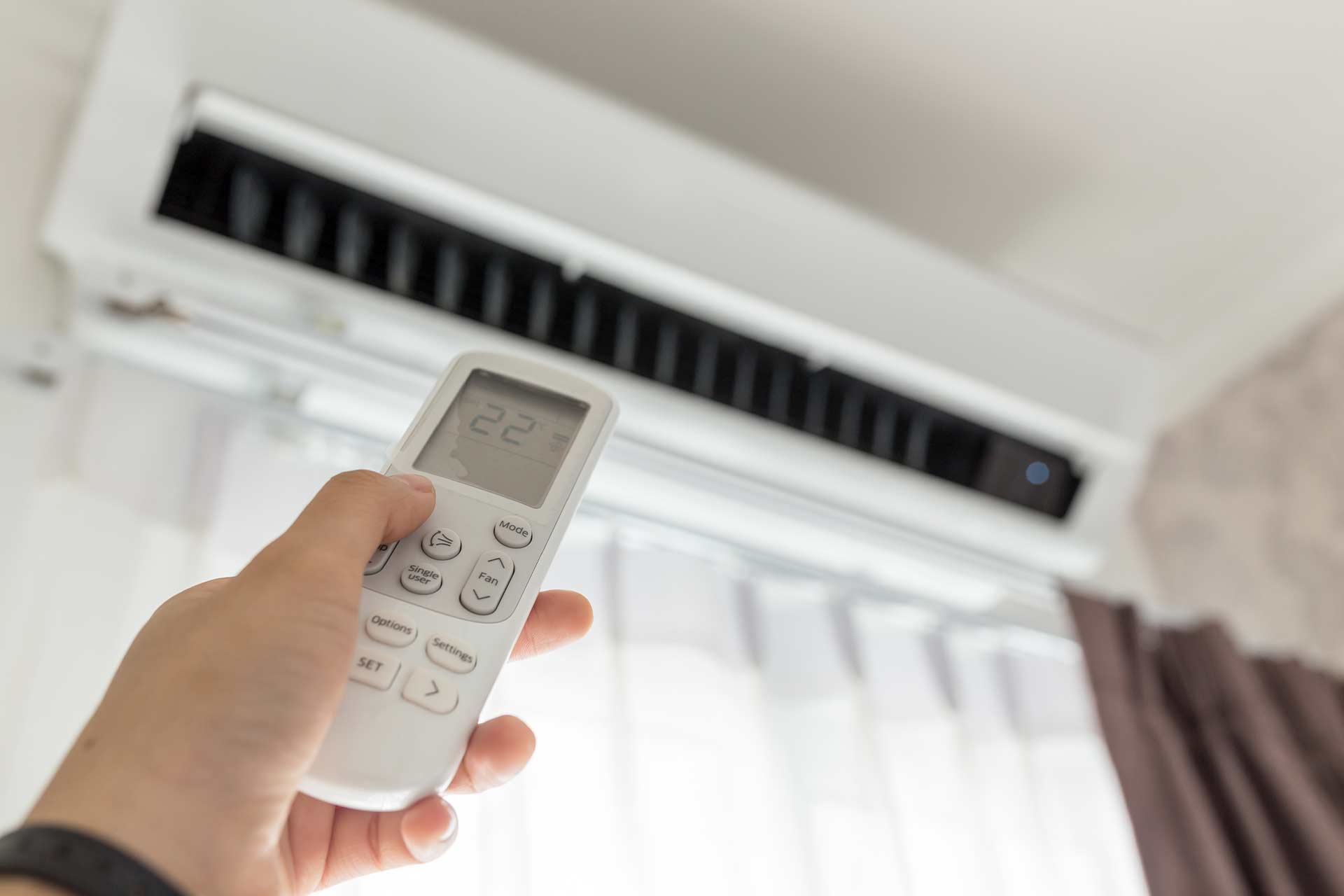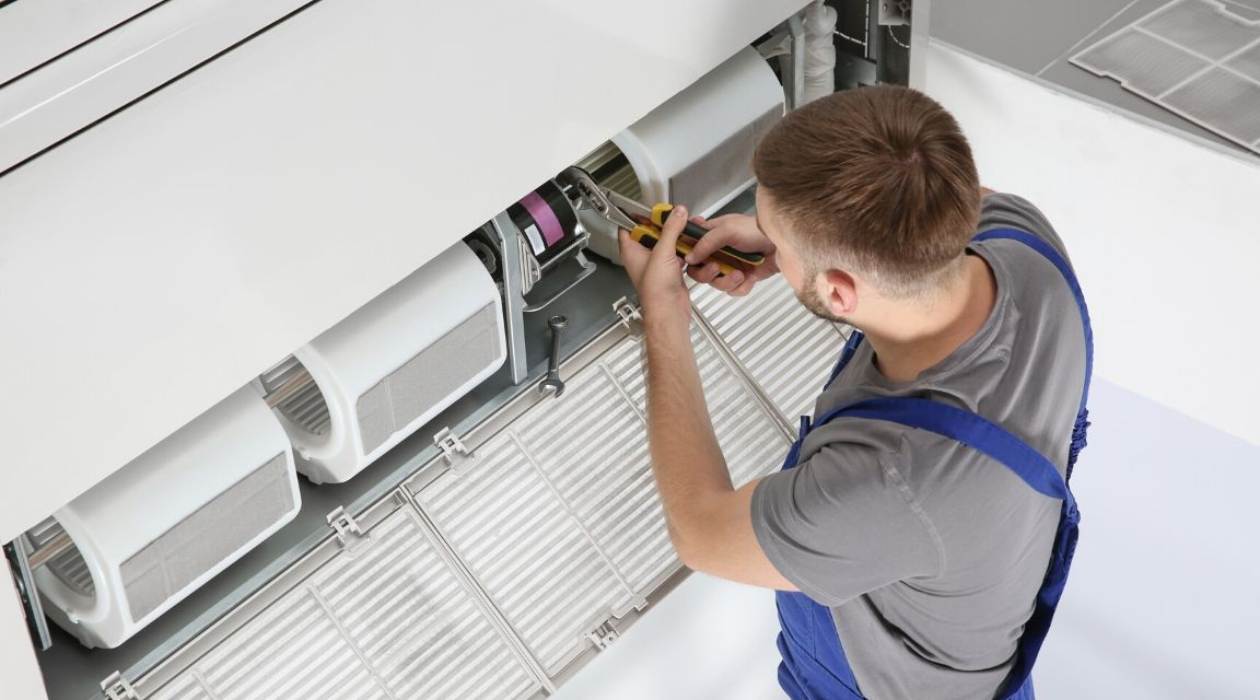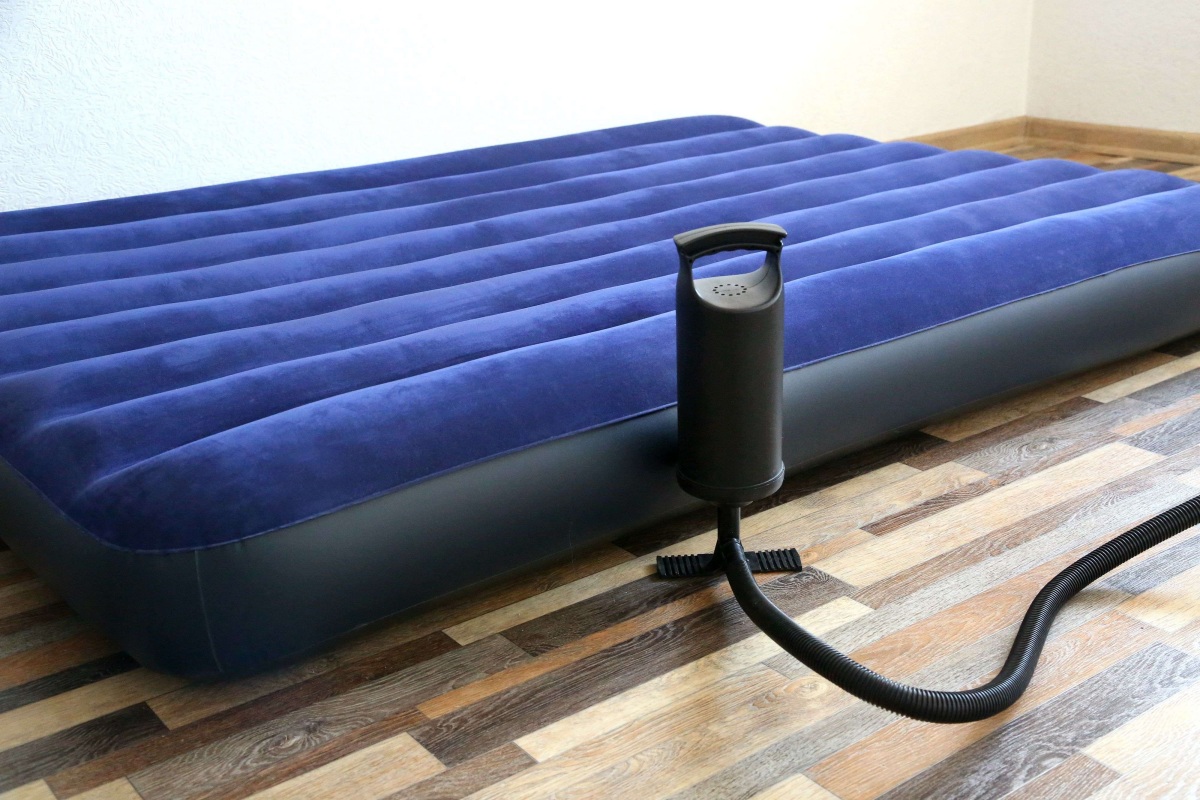Home>Home Maintenance>How Long Does It Take To Install A New Air Conditioner
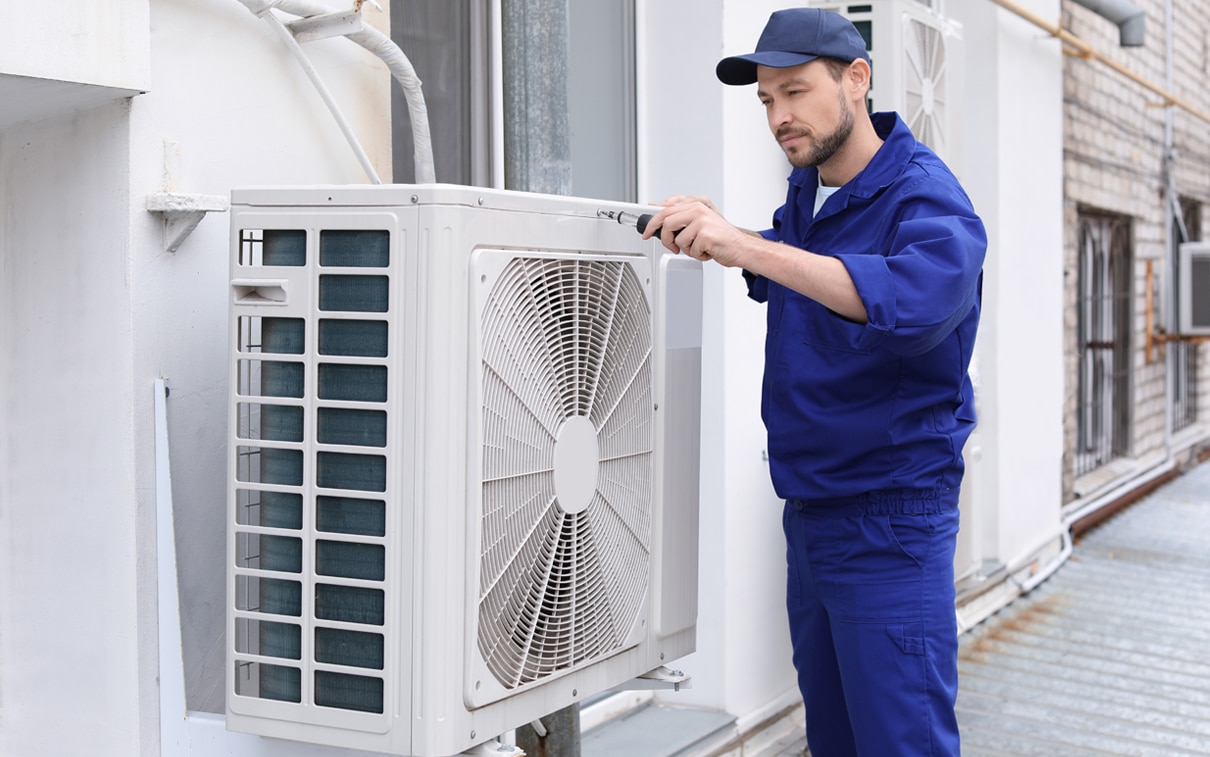

Home Maintenance
How Long Does It Take To Install A New Air Conditioner
Modified: October 31, 2024
Looking to install a new air conditioner? Discover how long it takes to complete this home maintenance task and get your home comfortably cool in no time.
(Many of the links in this article redirect to a specific reviewed product. Your purchase of these products through affiliate links helps to generate commission for Storables.com, at no extra cost. Learn more)
Introduction
Installing a new air conditioner is a significant home improvement project that requires careful planning and execution. It can greatly improve the comfort and quality of life in your home, especially during hot summer months. However, one of the common questions homeowners have is, “How long does it take to install a new air conditioner?”
The exact time it takes to install a new air conditioner can vary depending on several factors. Factors such as the size and type of the air conditioner, the existing infrastructure, ductwork requirements, accessibility of the installation area, electrical requirements, and the need for permits and inspections can all impact the installation timeline.
In this article, we will explore the various factors that can affect the installation time of a new air conditioner, as well as provide some recommendations for streamlining the installation process. Whether you are considering a DIY installation or hiring a professional contractor, understanding these factors can help you better plan and manage the installation project.
So, let’s dive in and explore the important factors that affect the installation time and learn how to streamline the process for a smooth and efficient installation of your new air conditioner.
Key Takeaways:
- Installing a new air conditioner can take 4 to 8 hours, but factors like size, existing infrastructure, and permits can affect the timeline. Hiring a professional contractor and preparing the installation area can streamline the process.
- Clear communication with the contractor, obtaining necessary permits, and ensuring space for the units can help ensure a smooth and efficient installation. Proper planning and coordination are key to a successful outcome.
Factors Affecting Installation Time
The installation time of a new air conditioner can be influenced by several factors. Let’s take a closer look at these factors and understand how they can impact the overall installation process.
1. Size and Type of Air Conditioner: The size and type of the air conditioner unit you choose can have a significant impact on the installation time. Larger units or more complex systems may require additional time and effort to install properly. It is essential to select the right size and type of air conditioner that suits your home’s cooling needs to ensure optimal performance and energy efficiency.
2. Existing Infrastructure: The condition of your home’s existing infrastructure, such as the ductwork, electrical wiring, and ventilation system, can affect the installation time. If your home doesn’t have an existing ductwork system, it may need to be installed, which can add significant time to the installation process.
3. Ductwork Requirements: If your new air conditioner requires ductwork installation or modification, it can significantly impact the installation time. Installing ductwork involves careful planning, measuring, and fitting, which can extend the overall installation timeline.
4. Accessibility of Installation Area: The accessibility of the installation area can also affect the installation time. If the outdoor and indoor units are easily accessible and the installation area is clear and free from obstructions, it can streamline the installation process. However, if the installation area is difficult to reach or requires extra effort to clear, it can add time to the installation.
5. Electrical Requirements: Proper electrical connections are crucial for the safe and efficient operation of your air conditioner. The electrical requirements for your new air conditioner, such as voltage and amperage, should be considered during the installation process. If any electrical modifications or upgrades are necessary, it can contribute to the overall installation time.
6. Permits and Inspections: Depending on your local regulations, you may need to obtain permits and undergo inspections before and after the installation of a new air conditioner. The time required to obtain permits and schedule inspections can add to the overall installation timeline. It is essential to check with your local authorities to ensure compliance with all necessary permits and inspections.
Considering these factors can help you estimate the time required for the installation of your new air conditioner. However, it’s important to remember that each installation is unique, and the actual time may vary based on your specific circumstances.
Preparation
Before the actual installation process begins, there are several crucial steps that need to be undertaken to ensure a smooth and efficient installation. These preparation steps are essential for a successful air conditioner installation project. Let’s take a closer look at each of these steps:
1. Site Assessment: Conducting a thorough site assessment is an important first step in the installation process. A professional contractor will evaluate your home’s layout, existing infrastructure, and cooling needs to determine the best location for the air conditioner units. Factors such as the size of the unit, access to electrical connections, and the need for ductwork modifications will be considered during this assessment.
2. Obtaining Necessary Permits: Depending on your location and local regulations, certain permits may be required for the installation of a new air conditioner. It is essential to check with your local authorities to determine the specific permits needed and their application process. Obtaining the necessary permits in advance will ensure compliance with local codes and regulations.
3. Ordering the Air Conditioner Unit: Once the site assessment is complete and the necessary permits are obtained, it’s time to order the air conditioner unit. It’s important to work with a reputable HVAC supplier or contractor to ensure the correct size and type of air conditioner unit is selected. A professional contractor can help you choose an energy-efficient unit that will meet your cooling needs while maximizing energy savings.
4. Scheduling Installation Date: After ordering the air conditioner unit, you can schedule the installation date with your chosen HVAC contractor. It’s advisable to schedule the installation during a time when you and your family can comfortably accommodate any disruptions caused by the installation process. Communicate your preferred installation time frame with the contractor, taking into consideration any upcoming events or vacations.
By completing these preparation steps, you can ensure that the installation process runs smoothly and efficiently. Proper planning and coordination with the HVAC contractor will help minimize any potential delays or issues during the installation process, leading to a successful installation of your new air conditioner unit.
Installation Process
Once the preparatory steps are completed, the installation process for a new air conditioner can begin. This process involves several key steps that ensure the proper setup and functioning of the unit. Let’s delve into each step of the installation process:
1. Removal of Old Air Conditioner (if applicable): If you are replacing an existing air conditioner, the first step is to remove the old unit. This may involve disconnecting electrical connections, removing refrigerant lines, and uninstalling the outdoor and indoor units. Proper disposal or recycling of the old unit should be done in accordance with local regulations.
2. Mounting the Outdoor Unit: The outdoor unit, also known as the condenser, needs to be properly mounted in a suitable location. This location should be secure, level, and provide adequate clearance for air circulation. The contractor will ensure the unit is securely positioned and anchored to the ground or wall, following manufacturer guidelines.
3. Connection of Refrigerant Lines: The refrigerant lines, which carry refrigerant between the outdoor and indoor units, need to be properly connected. This involves cutting and fitting the refrigerant lines, as well as ensuring tight seals to prevent leaks. The contractor will carefully connect and insulate the refrigerant lines following industry best practices.
4. Installation of Indoor Unit: The indoor unit, also known as the evaporator, needs to be installed in a suitable location inside your home. This is often done on a wall, ceiling, or floor, depending on the type of unit. The contractor will ensure proper mounting and secure attachment, ensuring proper airflow and distribution of cool air.
5. Installation of Ductwork (if required): If your air conditioner requires ductwork for proper ventilation and cooling, this step involves installing or modifying the existing ductwork system. The contractor will carefully plan and install the ducts, ensuring proper sizing, fit, and insulation to minimize energy loss.
6. Wiring and Electrical Connections: Proper wiring and electrical connections are critical for the safe and efficient operation of your air conditioner. The contractor will carefully connect the electrical wires from the indoor and outdoor units to the main electrical panel. This includes ensuring proper grounding, voltage compatibility, and adherence to safety standards.
7. Testing and Calibration: After the installation is complete, the system needs to be thoroughly tested to ensure proper functionality. This includes testing the electrical connections, refrigerant levels, airflow, and overall performance of the air conditioner. The contractor will also calibrate the system settings for optimal cooling and energy efficiency.
By following these steps and ensuring professional installation, you can have confidence in the proper setup and functioning of your new air conditioner. A well-executed installation process will help maximize the performance, longevity, and energy efficiency of your air conditioning system.
The time it takes to install a new air conditioner can vary depending on factors such as the type of unit, the complexity of the installation, and the experience of the technician. On average, it can take anywhere from 4 to 8 hours for a standard installation.
Time Estimates for Installation
The time required for the installation of a new air conditioner can vary based on several factors. While it is difficult to provide an exact timeframe for every installation, we can outline some typical installation timeframes and factors that may cause variations in installation time.
Typical Installation Timeframes: On average, a standard air conditioner installation can take anywhere from 4 to 8 hours. This timeframe includes the removal of an existing unit (if applicable), mounting the outdoor unit, connecting refrigerant lines, installing the indoor unit, and performing necessary wiring and electrical connections. However, larger or more complex systems may take longer to install, potentially extending the installation time to a full day or more.
Variations in Installation Time: Several factors can affect the duration of the installation process:
1. Size and Complexity of the System: Larger air conditioner units or more intricate systems, such as multi-zone or ductless systems, may require more time for installation due to the additional components and connections involved.
2. Existing Infrastructure: The condition of your home’s existing infrastructure, such as ductwork and electrical wiring, can impact the installation time. If modifications or repairs are needed, it may prolong the installation process.
3. Ductwork Installation: If your new air conditioner requires ductwork installation or modifications, it can significantly increase the installation time. Depending on the extent of the ductwork required, this can add several hours or even days to the installation process.
4. Accessibility and Clearances: The accessibility of the installation area and the presence of any obstacles can affect the installation time. If the installation area is difficult to access or cluttered, it may take longer to complete the installation.
5. Customization or Special Requirements: If you have specific customization requests or unique installation requirements, such as integrating the air conditioner with smart home systems or installing in unconventional locations, it may increase the installation time.
6. Additional Services: If you have requested additional services, such as upgrading electrical circuits or performing insulation work, it will extend the installation time accordingly.
It is important to consult with your HVAC contractor to get a more accurate estimate for your specific installation. They can evaluate your home’s needs, assess any challenges or unique requirements, and provide a more precise estimate of the installation time.
Remember, while it is natural to want a quick installation, it is crucial not to rush the process. A well-executed and thorough installation ensures the optimal performance and longevity of your air conditioner.
Recommendations for Streamlining Installation Process
To ensure a smooth and efficient installation process for your new air conditioner, here are some recommendations to consider:
1. Hiring a Professional Contractor: It is highly recommended to hire a professional HVAC contractor to handle the installation. A skilled and experienced contractor will have the expertise to properly assess your home’s needs, handle any complexities, and ensure a safe and efficient installation. They can also provide valuable guidance on selecting the right air conditioner unit for your specific requirements.
2. Clearing Installation Area: Prior to the installation, clear the installation area of any obstructions or clutter. This includes removing furniture, plants, debris, or any other items that may hinder the installation process. A clutter-free workspace allows the contractor to work efficiently and minimizes the risk of accidental damage or delays.
3. Ensuring Adequate Access and Space: Ensure that the installation area has sufficient space for the outdoor and indoor units. Provide clear pathways and access points for the contractor to maneuver the units without difficulty. Make sure there is ample space for maintenance and future servicing of the air conditioner.
4. Having Required Permits and Documentation Ready: Obtain any necessary permits and ensure you have all documentation readily available for the contractor. This includes building permits, HOA approvals, and any other necessary paperwork. Having these documents ready in advance will help avoid unnecessary delays in the installation process.
5. Communicating with the Contractor: Maintain open and clear communication with the contractor throughout the installation process. Discuss your specific requirements, any customization requests, and any concerns you may have. Keep the lines of communication open so that the contractor can address any issues promptly and keep you informed about the progress and any potential changes in the timeline.
By following these recommendations, you can streamline the installation process and ensure a successful installation of your new air conditioner. A well-coordinated and efficient installation will help you enjoy optimal cooling comfort and the long-term performance of your air conditioning system.
Conclusion
Installing a new air conditioner requires careful planning, preparation, and execution. By understanding the various factors that can affect installation time, homeowners can better manage the process and ensure a successful outcome.
Factors such as the size and type of the air conditioner, existing infrastructure, ductwork requirements, accessibility of the installation area, electrical needs, and permits and inspections all play a role in determining the installation time. Each installation is unique, and timings can vary based on these specific factors.
To streamline the installation process, it is recommended to hire a professional contractor who possesses the expertise and experience to handle the installation efficiently. Clearing the installation area, ensuring adequate access and space, having the necessary permits and documentation ready, and maintaining open communication with the contractor are also crucial steps in ensuring a smooth installation.
While the exact installation time will vary, a typical installation can take anywhere from 4 to 8 hours, with larger or more complex systems taking longer. It is essential to be prepared for potential variations in installation time based on your specific circumstances.
By following these guidelines and working closely with a professional contractor, homeowners can ensure the proper installation of their new air conditioner. This will result in a more comfortable living environment, improved energy efficiency, and long-term performance of the cooling system.
Remember, installing a new air conditioner is an investment in the comfort and value of your home. Taking the time to properly plan and execute the installation will lead to years of reliable cooling and improved quality of life. So, don’t hesitate to embark on this home improvement project and enjoy the benefits of a new air conditioner.
Frequently Asked Questions about How Long Does It Take To Install A New Air Conditioner
Was this page helpful?
At Storables.com, we guarantee accurate and reliable information. Our content, validated by Expert Board Contributors, is crafted following stringent Editorial Policies. We're committed to providing you with well-researched, expert-backed insights for all your informational needs.
